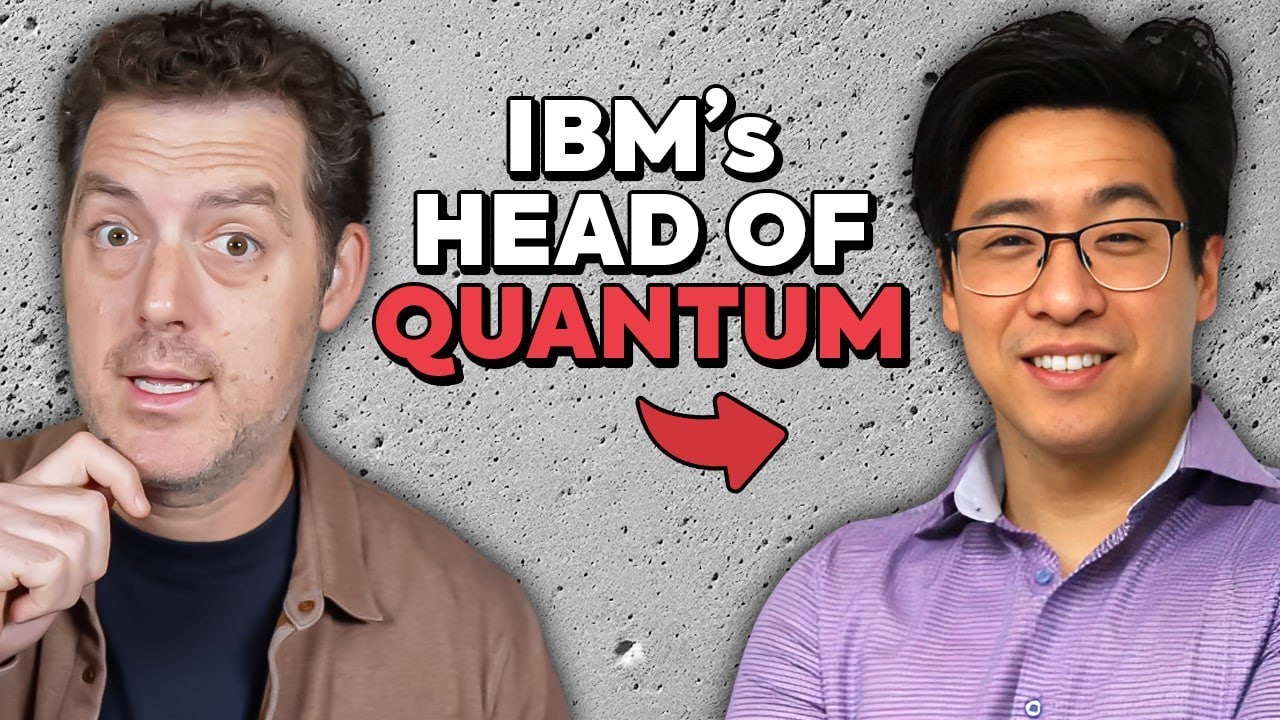In the interview, Jerry Chow, IBM’s Director of Quantum Systems, explains the fundamentals of quantum computing, its advantages over classical computing, and its potential applications in fields like drug discovery and encryption. He discusses the technical aspects of quantum hardware and software, emphasizing the collaboration between quantum and classical systems, and expresses optimism about the future intersection of quantum computing and artificial intelligence.
In the interview, Jerry Chow, IBM’s Director of Quantum Systems, discusses the fundamentals of quantum computing, its current state, and its potential impact on various fields, including artificial intelligence and encryption. Chow explains that quantum computing fundamentally differs from classical computing by utilizing quantum bits (qubits) instead of traditional bits. This allows quantum computers to process information in ways that can solve certain problems exponentially faster than classical computers, such as factoring large numbers, which is crucial for modern encryption methods.
Chow highlights specific use cases where quantum computing excels, such as drug discovery and materials science, where classical computers struggle to model complex molecular interactions. He emphasizes that while quantum computers can potentially solve problems that would take classical computers billions of years, they are not a replacement for classical computing. Instead, they will work alongside traditional systems, each suited for different types of tasks. Chow also addresses concerns about quantum computing’s implications for encryption, noting that while quantum computers could break current encryption methods, there are already quantum-resistant cryptographic protocols being developed.
The conversation shifts to the technical aspects of quantum computers, including their hardware components and the necessity of cooling systems to maintain qubits at extremely low temperatures. Chow explains that superconducting qubits, which are used in IBM’s quantum computers, require cooling to around 10 to 15 millikelvin to function properly. He describes the complex infrastructure needed to support quantum computing, including cryogenic refrigerators and classical control systems that interface with quantum processors.
Chow also discusses the software layer of quantum computing, mentioning IBM’s Qiskit, a software development kit that allows users to program quantum computers. He explains that while quantum circuits serve as the basic unit of computation, higher-level abstractions and libraries are being developed to make quantum programming more accessible to developers. This evolution in software is crucial for integrating quantum computing into broader computational workflows, where it can complement classical and GPU-based systems.
Finally, Chow reflects on the future of quantum computing, emphasizing that while significant advancements are being made, there is still much to explore regarding the universe of problems that quantum computers can solve. He expresses optimism about the intersection of quantum computing and artificial intelligence, noting that both fields can benefit from each other. Chow concludes by sharing resources for those interested in learning more about quantum computing and invites further discussion on the topic.
